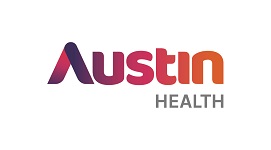Please use this identifier to cite or link to this item:
https://ahro.austin.org.au/austinjspui/handle/1/11757Full metadata record
| DC Field | Value | Language |
|---|---|---|
| dc.contributor.author | Chandran, Sujievvan | - |
| dc.contributor.author | Nikfarjam, Mehrdad | - |
| dc.date.accessioned | 2015-05-16T01:23:03Z | |
| dc.date.available | 2015-05-16T01:23:03Z | |
| dc.date.issued | 2013-05-03 | - |
| dc.identifier.citation | Indian Journal of Gastroenterology : Official Journal of the Indian Society of Gastroenterology 2013; 32(5): 324-9 | en_US |
| dc.identifier.other | PUBMED | en |
| dc.identifier.uri | https://ahro.austin.org.au/austinjspui/handle/1/11757 | en |
| dc.description.abstract | This study aims to assess the impact of upfront double-guidewire technique (DGT) following inadvertent early pancreatic duct (PD) cannulation or biliary cannulation and post-endoscopic retrograde cholangiopancreatography (ERCP) complications. A pilot non-randomized cohort study was performed in patients undergoing ERCP. DGT was utilized in the first 25 patients followed by standard cannulation technique (SCT) in the subsequent 25. A significantly lower PD cannulation rate [median (range)] was noted in the DGT group [1 (0-5) vs. 3 (0-6); p=0.013]; however, the pancreatitis rate was similar [2 (9 %) DGT, 1 (4 %) SCT; p=0.601]. In the SCT group, 15/25 (60 %) required DGT to achieve biliary cannulation. The majority of our cohort proceeding to an SCT following early PD cannulation required a DGT to achieve biliary cannulation. Early DGT resulted in a significant reduction in unintentional pancreatic cannulation but did not translate into a reduction in pancreatitis in our cohort. | en_US |
| dc.language.iso | en | en |
| dc.subject.other | Adult | en |
| dc.subject.other | Aged | en |
| dc.subject.other | Aged, 80 and over | en |
| dc.subject.other | Bile Ducts | en |
| dc.subject.other | Catheterization.methods | en |
| dc.subject.other | Cholangiopancreatography, Endoscopic Retrograde.adverse effects.methods | en |
| dc.subject.other | Female | en |
| dc.subject.other | Humans | en |
| dc.subject.other | Male | en |
| dc.subject.other | Middle Aged | en |
| dc.subject.other | Pancreatic Ducts | en |
| dc.subject.other | Pancreatitis.etiology | en |
| dc.title | The utility of upfront double wire guided biliary cannulation following early unintentional pancreatic cannulation in patients undergoing ERCP. | en_US |
| dc.type | Journal Article | en_US |
| dc.identifier.journaltitle | Indian Journal of Gastroenterology : Official Journal of the Indian Society of Gastroenterology | en_US |
| dc.identifier.affiliation | Gastroenterology and Hepatology | en_US |
| dc.identifier.doi | 10.1007/s12664-013-0330-5 | en_US |
| dc.description.pages | 324-9 | en |
| dc.relation.url | https://pubmed.ncbi.nlm.nih.gov/23640731 | en |
| dc.type.content | Text | en_US |
| dc.type.austin | Journal Article | en |
| local.name.researcher | Chandran, Sujievvan | |
| item.fulltext | With Fulltext | - |
| item.languageiso639-1 | en | - |
| item.grantfulltext | open | - |
| item.openairetype | Journal Article | - |
| item.openairecristype | http://purl.org/coar/resource_type/c_18cf | - |
| item.cerifentitytype | Publications | - |
| crisitem.author.dept | Gastroenterology and Hepatology | - |
| crisitem.author.dept | Surgery (University of Melbourne) | - |
| Appears in Collections: | Journal articles | |
Files in This Item:
| File | Size | Format | |
|---|---|---|---|
| 23640731.pdf | 42.08 kB | Adobe PDF | View/Open |
Items in AHRO are protected by copyright, with all rights reserved, unless otherwise indicated.
